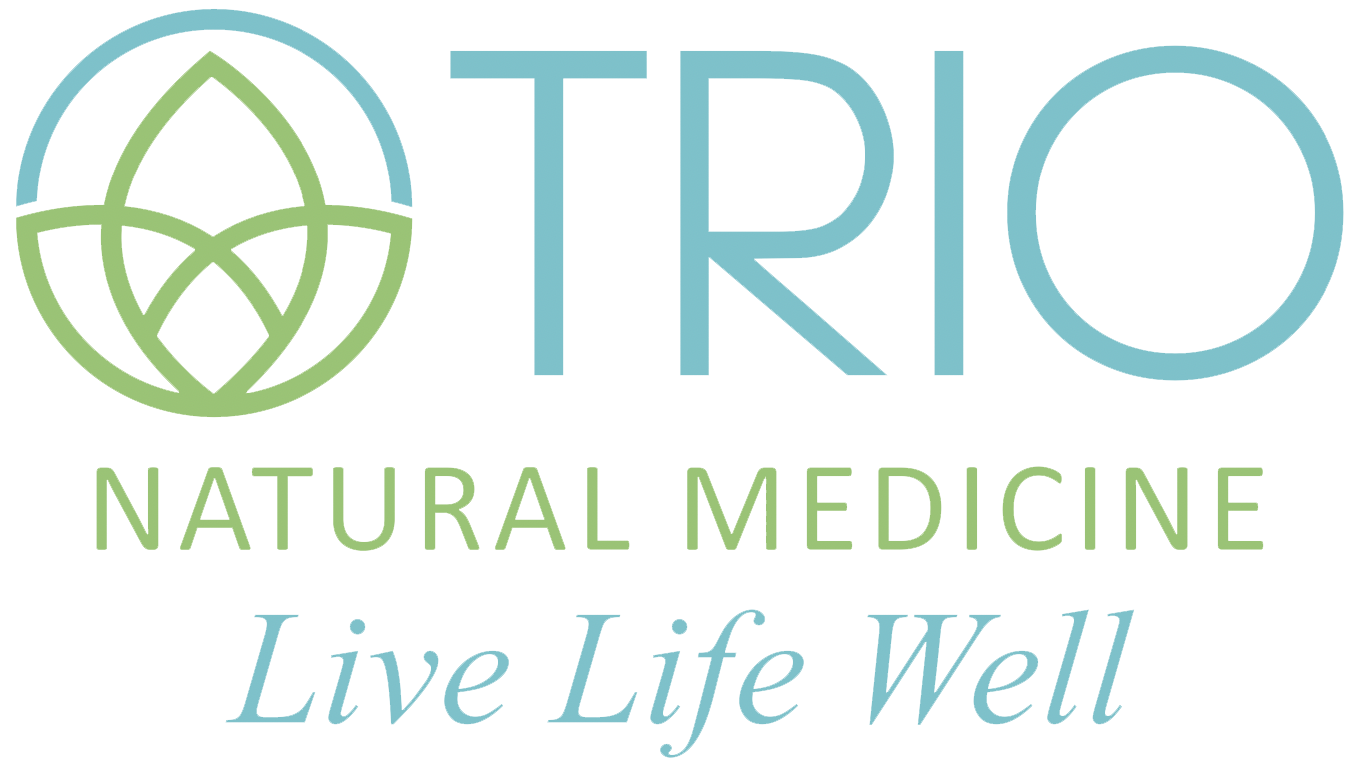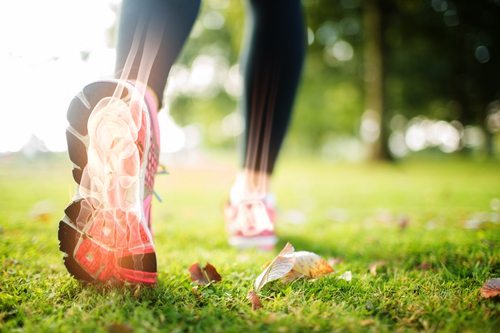Should you be concerned about your bone health? It’s never too early to take a proactive approach to keeping your bones strong. Your bones are continuously breaking down and rebuilding. When you are younger your body makes new bone faster than it breaks down which helps to build your bone density. Bone density peaks around age 30 and after that bone mass declines as you get older. If bone density falls below a certain range you can be diagnosed with Osteopenia or Osteoporosis depending on the degree of bone loss. Having low bone density causes weak and brittle bones that break easily.
The goal to protecting your bones is to create new bone while slowing down the rate of bone loss.
Studies suggest that approximately one in two women and up to one in four men age 50 and older will break a bone due to osteoporosis.
Are you at risk for Osteoporosis?
The following are risk factors for low bone density:
- Low calcium and mineral diet
- Sedentary lifestyle
- Tobacco and Alcohol use
- Menopausal Woman
- Men over age 50
- Stress (increased cortisol breaks down bone and shuts down digestive function leading to nutrient deficiency)
- Digestive disorders (Crohn’s, Celiac disease, Ulcerative colitis, IBS)
- Certain Medications (corticosteroids, anti-depressants, methotrexate, anti-seizure medications, and proton-pump inhibitors for acid reflux)
The conventional treatment for osteoporosis is bisphosphonates which are a class of drugs that prevent the loss of bone density by reducing the number of bone cells called osteoclasts that cause bone breakdown. Although this is the first line of treatment for low bone density, many women are apprehensive about starting this medication due to the numerous side effects associated with it including bone, joint or muscle pain, nausea, difficulty swallowing, irritation of the esophagus, gastric ulcers, inflammation of the eye, osteonecrosis of the jaw and unusual fractures of the hip.
Studies have shown that these medications increase bone mineral density by an average of 4.1% in the hips and 6.2% in the spine over the course of 3 yrs of treatment.
With our naturopathic approach we look at all the factors that effect bone density including diet and lifestyle, nutrient levels, stress, hormones and health history and create a wellness plan tailored to the individual needs of each patient with the goal of helping to build and maintain healthy bone density.
With our naturopathic approach we have been able to reverse osteoporosis in our patients without any of the harmful side effects associated with conventional osteoporosis medications.
Patient Case:
57 yo postmenopausal woman with osteoporosis of spine and osteopenia of the hip.
Treatment: started patient on nutritional support, dietary changes and bio-identical hormone therapy.
Results:
- Increase in bone mineral density (BMD) in spine by 24% after 1-1/2 years of treatment.
- Additional increase in BMD of spine by 18% in 4 months.
- Total of 38% increase in BMD of spine after 3 years of naturopathic treatment.
- 12.5% increase in BMD of hips after 1-1/2 yrs of treatment
- Reversal of osteoporosis in the spine
Check out these amazing results with our natural approach!
|
9/2015 |
3/2017 |
7/2018 |
Increase in BMD after 1.5 yrs of treatment |
Increase in BMD after 3yrs of treatment |
Average increase in BMD after 3yrs of Bisphosphonates |
|
|
T score Spine |
-2.9 |
-2.2 |
-1.8 |
24% |
38% |
6.2% |
|
T score Hips |
-2.4 |
-2.1 |
-2.1 |
12.5% |
12.5% |
4.1% |
As the table above shows, we were able to significantly increase our patient’s bone mineral density in the hips and spine above and beyond the average increase in bone mineral density expected with bisphosphonates. This is huge! Yet bisphosphonates remain the standard of care for osteoporosis treatment despite the fact that natural treatments with better outcomes exist.
Whether you are premenopausal or postmenopausal, you can take action now to protect your bones. Listed below are evidence-based natural treatments to improve bone density and slow the rate of bone loss.
8 Natural Ways to Build Healthy Bones:
1) Eat your Veggies: veggies are rich in minerals which are needed to build bone density. Vegetables are also high in antioxidants like vitamin C which not only stimulates the production of bone-forming cells but also protects bone cells from free-radical damage.
2) Perform Weight-Bearing Exercises: Research shows that a minimum of 2hrs per week of high-impact strength-training exercises done on a regular basis improves bone density by promoting the formation of new bone growth.
3) Get Adequate Protein: 50% of bone is made of protein and research shows that older women who consume higher amounts of protein have better bone density especially during weight loss or calorie restriction.
4) Eat Calcium-rich foods: calcium is the main mineral found in bones so it’s important to get your daily required intake which is 1300mg per day for teens, 1000mg/day for young adults (19-50) and 1200mg/day 51 and older.
Non-dairy sources of calcium include:
- Nuts and Seeds
- Beans and Lentils
- Sea vegetables
- Leafy Greens
- Soy
- Salmon and Sardines
5) Supplement with Vitamin D3 and K2: Vitamin D helps your body absorb calcium while K2 helps to mineralize bones with calcium. Even though our bodies can synthesize vitamin D from sun exposure, most people (even in sunny climates) are deficient which is why taking a daily vitamin D supplement is important. It is best to test your vitamin D levels with a blood test first to determine the best dose to keep your levels optimal.
6) Omega-3 fatty acids: omega 3 fatty acids from fish and plant sources (walnuts and flaxseeds) reduce bone breakdown and increase bone formation.
7) Magnesium and Zinc: Magnesium and zinc are important minerals, in addition to calcium, that are needed for bone health.
8) Optimize Hormone levels: Estrogen deficiency leads to decreased bone mass and reduced bone strength. Accelerated bone loss occurs when serum estradiol levels decline to postmenopausal levels. To prevent or decrease bone loss, serum estradiol must be maintained at a minimum of 40-60pg/ml which can be achieved with bio-identical estrogen replacement therapy in a menopausal woman. Women with undetectable estradiol levels are 2.5 times more likely to suffer hip and spine fractures compared to women with higher levels of estrogen.
In men, low testosterone can cause a loss of bone mass.
9) Reduce Stress and Treat Adrenal fatigue: Low DHEA and chronically high or low cortisol from prolonged stress inhibits bone formation and decreases bone density. The best assessment of adrenal function is to test your DHEA and cortisol levels with a 5-point saliva test.
If you have been diagnosed with osteoporosis or osteopenia and you are looking for a natural treatment approach, we are here to help. Call our office at 310-955-7261 to schedule a consultation with one of our naturopathic doctors and start your path to wellness.
Resources:
Kemmler, Wolfgang et al. Exercise frequency and bone mineral density development in exercising postmenopausal osteopenic women. Is there a critical dose of exercise for affecting bone? Results of the Erlangen Fitness and Osteoporosis Prevention Study. Bone , August 2016, Volume 89 , 1 – 6
https://www.thebonejournal.com/article/S8756-3282(16)30106-5/fulltext
Gunn, CA et al. Increased intake of selected vegetables, herbs and fruit may reduce bone turnover in post-menopausal women. Nutrients. 2015 Apr 8;7(4):2499-517.
Jennings A, et al. Amino Acid Intakes Are Associated With Bone Mineral Density and Prevalence of Low Bone Mass in Women: Evidence From Discordant Monozygotic Twins. J Bone Miner Res. 2016 Feb;31(2):326-35
Promislow JH, et al. Protein consumption and bone mineral density in the elderly : the Rancho Bernardo Study. Am J Epidemiol. 2002 Apr 1;155(7):636-44
Beasley JM et al. Biomarker-calibrated protein intake and bone health in the Women’s Health Initiative clinical trials and observational study. Am J Clin Nutr. 2014 Apr;99(4):934-40
Sukumar D, et al. Areal and volumetric bone mineral density and geometry at two levels of protein intake during caloric restriction: a randomized, controlled trial. J Bone Miner Res. 2011 Jun;26(6):1339-48
Molfino A, et al. The role for dietary omega-3 fatty acids supplementation in older adults. Nutrients. 2014 Oct 3;6(10):4058-73
Griel AE, et al. An increase in dietary n-3 fatty acids decreases a marker of bone resorption in humans. Nutr J. 2007 Jan 16;6:2.
Vaananen HK, et al. Estrogen and bone metabolism. Maturitas. 1996 May;23 Suppl:S65-9. Nat Rev Endocrinol. 2013 Dec; 9(12): 699–712.
Stavros CM, et al. The role of estrogen and androgen receptors in bone health and disease. Nat Rev Endocrinol. 2013 Dec; 9(12): 699–712.
Bruce Ettinger, et al. Associations between Low Levels of Serum Estradiol, Bone Density, and Fractures among Elderly Women: The Study of Osteoporotic Fractures. The Journal of Clinical Endocrinology & Metabolism, Volume 83, Issue 7, 1 July 1998, Pages 2239–2243, https://doi.org/10.1210/jcem.83.7.4708
https://academic.oup.com/jcem/article/83/7/2239/2865147
Pia-Maria Wippert, et al. Stress and Alterations in Bones: An Interdisciplinary Perspective. Front Endocrinol (Lausanne). 2017; 8: 96.
Laurie F, et al. Effect of 12-month dehydroepiandrosterone replacement therapy on bone, vagina, and endometrium in postmenopausal women. J Clin Endocrinol Metab. 1997 Oct;82(10):3498-505.
Miklos S. Dehydroepiandrosterone sulphate in the diagnosis of osteoporosis. Acta Biomed Ateneo Parmense. 1995;66(3-4):139-46

